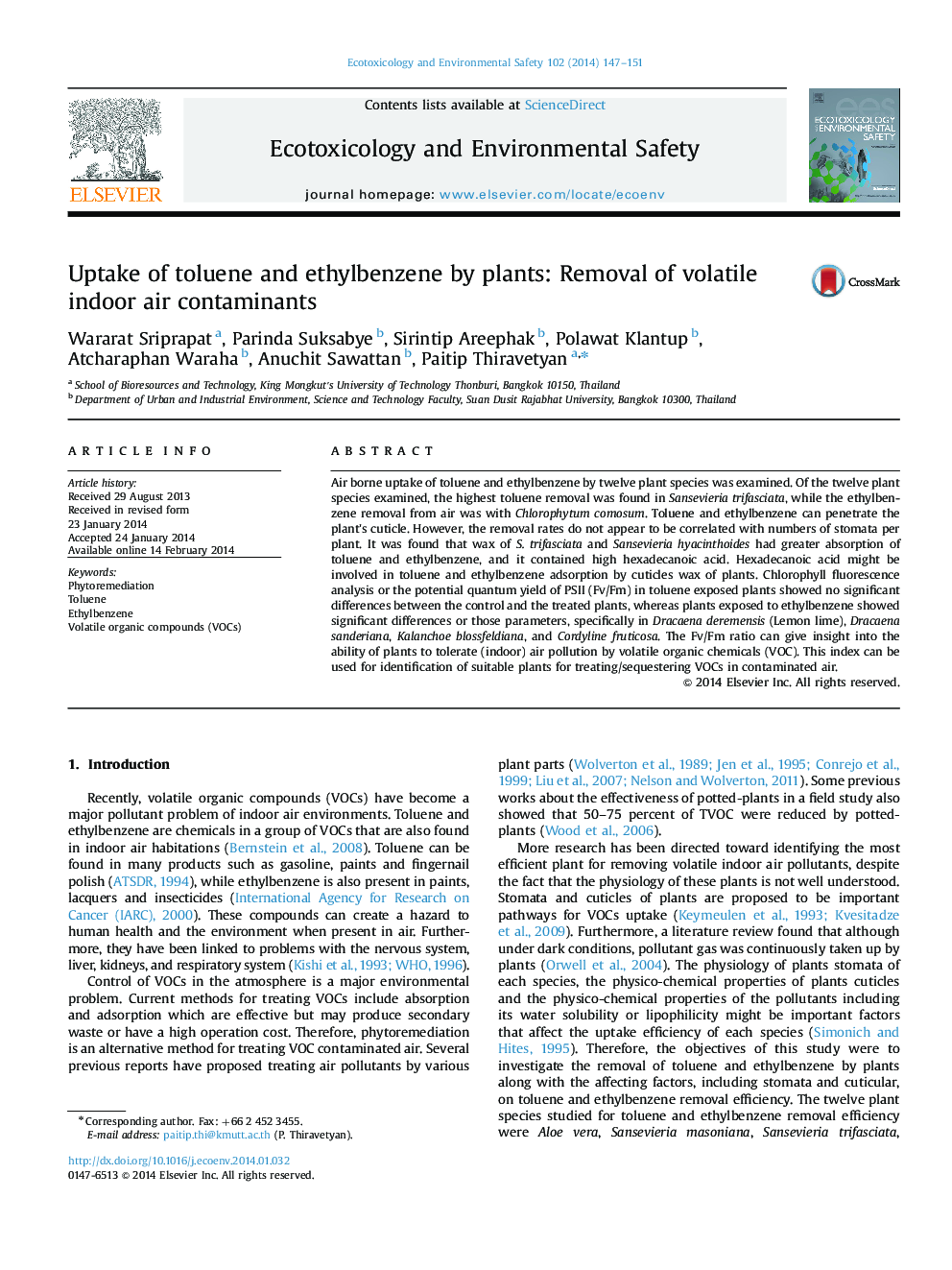| کد مقاله | کد نشریه | سال انتشار | مقاله انگلیسی | نسخه تمام متن |
|---|---|---|---|---|
| 6312182 | 1618961 | 2014 | 5 صفحه PDF | دانلود رایگان |
- S. trifasciata was the efficient plant for toluene removal.
- C. comosum was the efficient plant for ethylbenzene removal.
- VOC removal rates do not appear to be correlated with numbers of stomata.
- Composition of cuticle might be more effective than thickness.
- Fv/Fm can give insight into the ability of plants to tolerate air pollution.
Air borne uptake of toluene and ethylbenzene by twelve plant species was examined. Of the twelve plant species examined, the highest toluene removal was found in Sansevieria trifasciata, while the ethylbenzene removal from air was with Chlorophytum comosum. Toluene and ethylbenzene can penetrate the plant׳s cuticle. However, the removal rates do not appear to be correlated with numbers of stomata per plant. It was found that wax of S. trifasciata and Sansevieria hyacinthoides had greater absorption of toluene and ethylbenzene, and it contained high hexadecanoic acid. Hexadecanoic acid might be involved in toluene and ethylbenzene adsorption by cuticles wax of plants. Chlorophyll fluorescence analysis or the potential quantum yield of PSII (Fv/Fm) in toluene exposed plants showed no significant differences between the control and the treated plants, whereas plants exposed to ethylbenzene showed significant differences or those parameters, specifically in Dracaena deremensis (Lemon lime), Dracaena sanderiana, Kalanchoe blossfeldiana, and Cordyline fruticosa. The Fv/Fm ratio can give insight into the ability of plants to tolerate (indoor) air pollution by volatile organic chemicals (VOC). This index can be used for identification of suitable plants for treating/sequestering VOCs in contaminated air.
Journal: Ecotoxicology and Environmental Safety - Volume 102, April 2014, Pages 147-151
